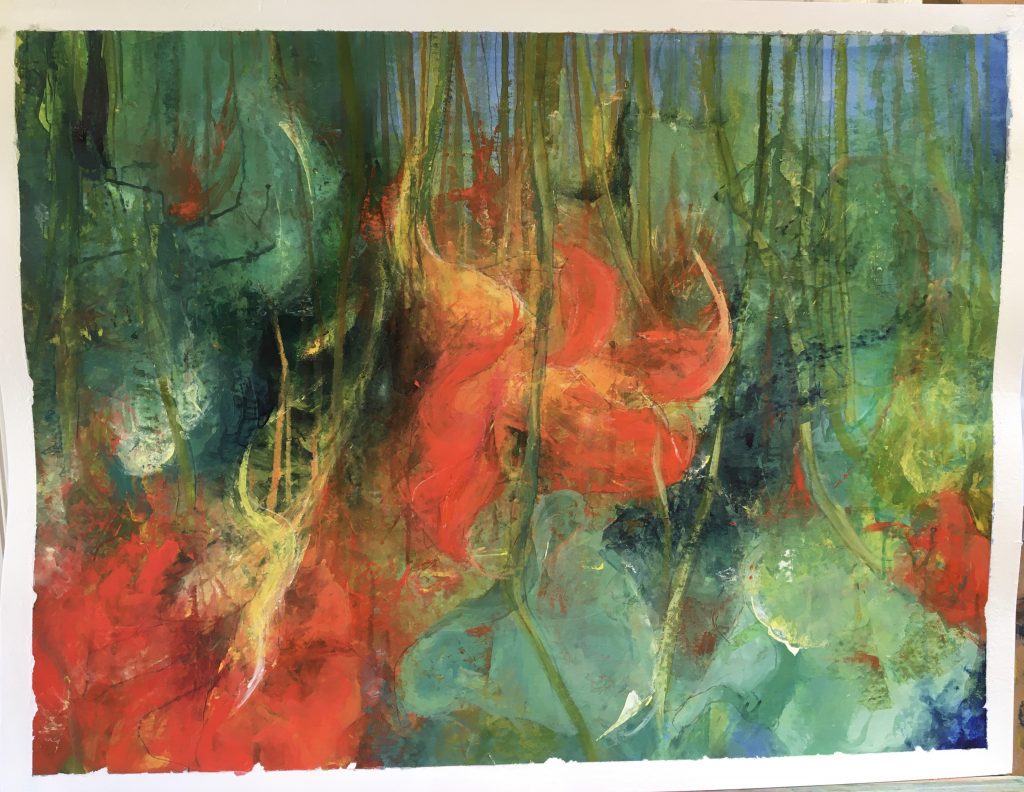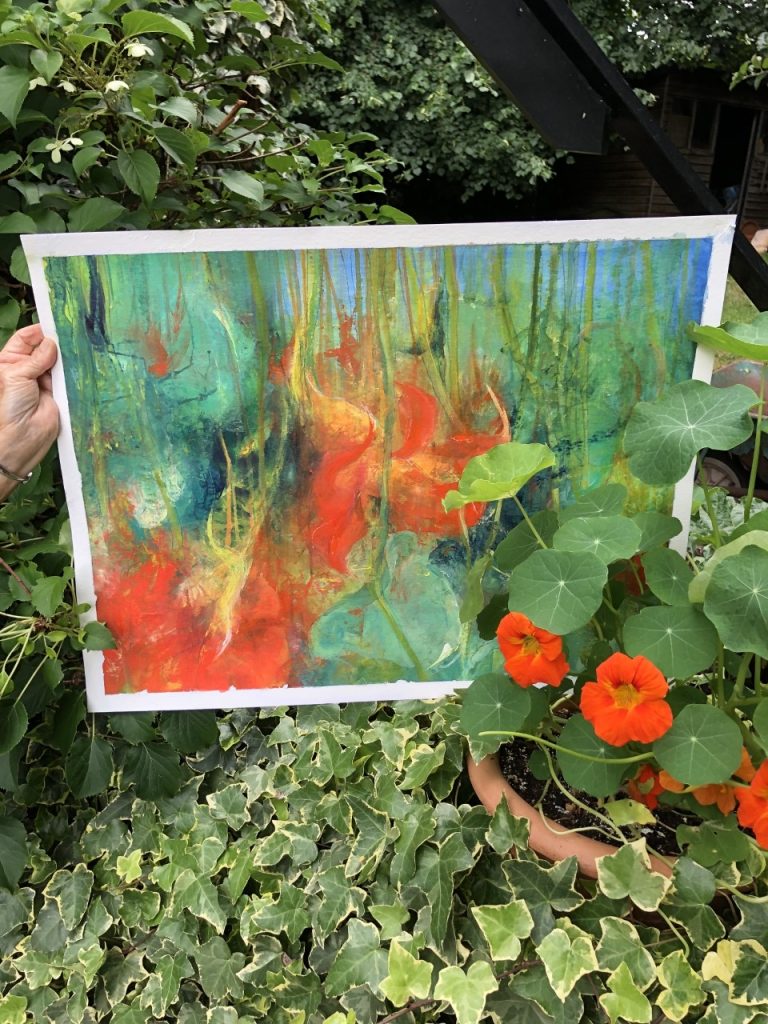PART 2 STUDIO WORK – POST 1
Following up on the pointers for the next assignment from the tutor, I have been giving thought to where the focus on ‘sound’ features in the present work. One of the pointers is to research ‘sound art’. In my reading I studied ‘The Soundscape’ by R Murray Schafer and enjoyed his exploration of the sonic environment mainly because it raised awareness and helped the reader to become more sensitive to the sounds around us. I have since looked at two other books, ‘Ocean of Sound’ by David Toop and ‘Sonic Flux: Sound, Art and metaphysics’ by Christopher Cox. The first of these texts is focused mainly on twentieth century music and in particular ambient sound. The second looks at noise, silence and environmental sound through the philosophical analysis of works by John Cage, Max Neuhaus, Christian Marclay and many others. I’m still in the process of reading these texts. I have also looked at various websites etc on the whole medium of Sound art.
My research into ‘place’ for the contextual studies essay included the writings of Mark Tredinnick, essayist and poet, in his book, ‘The Land’s Wild Music’. In it, he quotes from Paul Carter, an Australian cultural theorist, as describing ‘places as dynamic spaces, living and turbulent, never still and never finished becoming. Carter reminds us that landscapes are not just visible entities we see, but also the soundscapes we hear.”
Tredinnick writes: ”Nature is never still, and what we see is filled vibrantly with what we cannot see – atoms, geological movements, winds, seasons, sap, salt, microbes, thoughts of animals, rotation of leaves. Places are alive with movement and complexity. The characteristic interplay of biological and physical forces within a place is its identity – its soul, its personality, its lifeworld… Writing (I have substituted Painting) without an eye for movement, without an ear for vibration or without a feeling for the gesture of things will miss a place’s self – its very nature.”
Thinking more carefully about the place of sound in this present body of work, I feel that ‘Sound Art’ is not actually what the work is about. I am looking at ‘sound’ as one of the senses we use to gain greater awareness of our natural world. Using all of our senses allows new awareness, greater appreciation and hopefully a new and deeper level of commitment to sustaining the permanence and beauty of this world. Coming to this conclusion has allowed the next development in the work to happen because it has opened up the possibilities of the paintings beyond simply birdsound.
Opening up possibilities is great except that it presents new challenges. These challenges merge into other tensions highlighted in the Part 1 feedback. These are the continued tension between drawing and painting in the work and the need to explore ‘space’ in the composition. I will be continuing to develop these areas in my studio work.

“How can we save what we do not love, and how can we love what we do not know? “The Land Ethic” from ‘A Sand County Almanac”, Aldo Leopold. This painting of travelling nasturtiums is exploring this concept. As well as working with space I am trying to express a deeper awareness and love of a special part of the garden, experimenting with depicting the image without any abstract presentation of ‘sound’. I’m searching for a place which holds mystery and a changing moving world, full of life, energy and music. There are many layers to this painting and I’ve tried to tread the fine line between abstraction and representation.
I wanted to explore how it sat with its original in the garden. The strong light of a summer day, even though cloudy, drained a lot of the colour. I experimented with different views of the image. I did feel, however, that, apart from the intrusive white of the border, the paining held onto a world within a world. Nature itself seemed rather predictable and samey but the image said something else…not sure what at this stage! Perhaps it spoke of sounds, of creatures, of the ‘in your face’ colour outrage!


